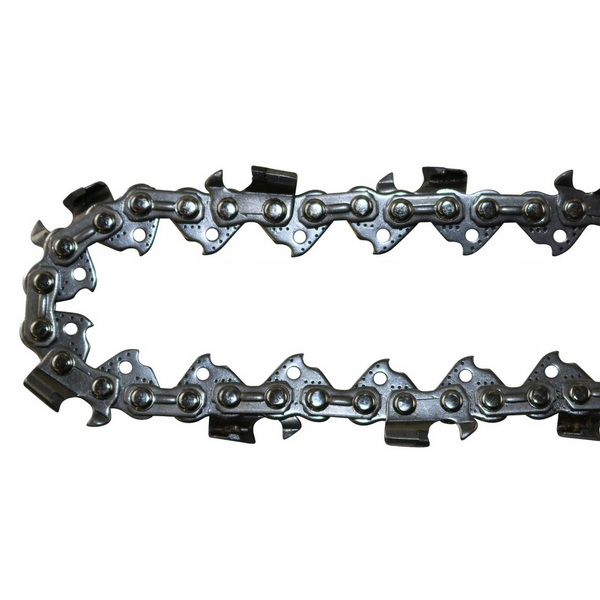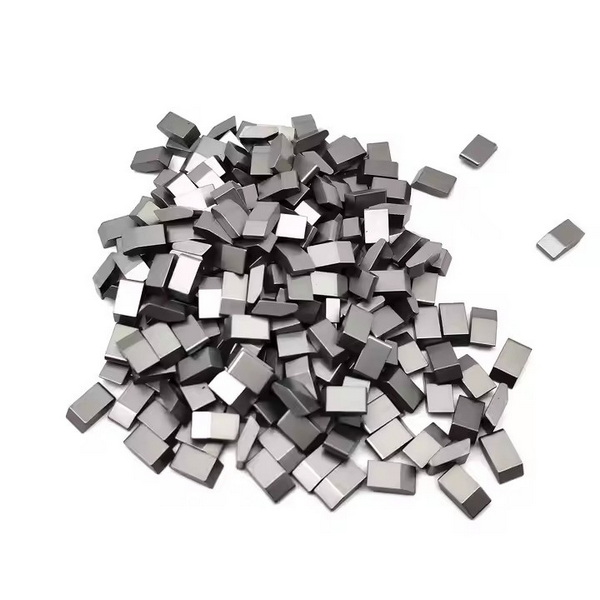Content Menu
● Introduction to Tungsten Carbide
>> Properties of Tungsten Carbide
● Applications of Tungsten Carbide
>> Construction Industry
>> Milling Industry
>> Jewelry and Fashion
>> Aerospace Industry
>> Medical Industry
● Metal Detection and Tungsten Carbide
>> Challenges in Detecting Tungsten Carbide
>> Specialized Detection Methods
● Advanced Detection Techniques
>> 1. X-Ray Computed Tomography (CT) Scanning
>> 2. Neutron Radiography
>> 3. Thermal Imaging
>> 4. Acoustic Emission Testing
● Future Developments in Detection Technology
● Conclusion
● FAQ
>> 1. What is Tungsten Carbide?
>> 2. Can Metal Detectors Detect Tungsten Carbide?
>> 3. What are the Main Applications of Tungsten Carbide?
>> 4. How Does Tungsten Carbide Compare to Other Metals in Detection?
>> 5. What Specialized Methods Can Detect Tungsten Carbide?
● Citations:
Tungsten carbide is a compound made from tungsten and carbon, known for its exceptional hardness and wear resistance. It is widely used in various industries, including construction, milling, and even jewelry. However, when it comes to metal detection, the question arises: Can tungsten carbide be detected by metal detectors? This article will delve into the properties of tungsten carbide, its applications, and how it interacts with metal detectors.

Introduction to Tungsten Carbide
Tungsten carbide (WC) is a chemical compound consisting of equal parts tungsten and carbon. It is renowned for its high density, hardness, and resistance to corrosion and wear. These properties make it an ideal material for cutting tools, drill bits, and other industrial applications where durability is crucial.
Properties of Tungsten Carbide
- Hardness: Tungsten carbide ranks about 9.0–9.5 on the Mohs scale, making it one of the hardest substances known, second only to diamond.
- Density: It has a density of approximately 15.6 g/cm³, which is higher than most metals but lower than pure tungsten.
- Conductivity: Tungsten carbide has relatively low electrical conductivity compared to pure metals like copper or aluminum.
- Magnetic Properties: It is non-magnetic, which affects its detectability by metal detectors.
Applications of Tungsten Carbide
Tungsten carbide is used in a wide range of industries due to its unique properties:
Construction Industry
Tungsten carbide is commonly used in construction tools such as saw blades and drill bits because of its ability to withstand harsh conditions and maintain its shape under heavy use.
Milling Industry
About 10% of tungsten carbide is used in the milling industry for tools like mill inserts and end mills, where precision and durability are essential.
Jewelry and Fashion
Tungsten carbide is also used in jewelry due to its hardness and resistance to scratches, making it ideal for wedding bands.
Aerospace Industry
In the aerospace sector, tungsten carbide is used in rocket nozzles and other components that require high strength and resistance to extreme temperatures.
Medical Industry
Tungsten carbide is used in medical implants and surgical instruments due to its biocompatibility and durability.
Metal Detection and Tungsten Carbide
Metal detectors work on the principle of electromagnetic induction, detecting metals by sensing changes in the electromagnetic field caused by the presence of conductive materials. However, tungsten carbide's low conductivity and non-magnetic nature make it challenging to detect using standard metal detectors.
Challenges in Detecting Tungsten Carbide
- Conductivity: Tungsten carbide has low electrical conductivity, which reduces its detectability by metal detectors designed for highly conductive metals.
- Magnetic Properties: Being non-magnetic, tungsten carbide does not interact strongly with magnetic fields used in some metal detectors.
Specialized Detection Methods
For detecting tungsten carbide, specialized methods such as ultrasonic testing or eddy current testing may be more effective than traditional metal detectors.

Advanced Detection Techniques
In recent years, advancements in detection technology have led to more sophisticated methods for identifying materials like tungsten carbide:
1. X-Ray Computed Tomography (CT) Scanning
This method uses X-rays to create detailed cross-sectional images of objects, allowing for the detection of tungsten carbide components within complex structures.
2. Neutron Radiography
Similar to X-ray CT scanning, neutron radiography uses neutron beams to image objects. It is particularly useful for detecting materials with high neutron absorption, such as tungsten.
3. Thermal Imaging
Thermal imaging can detect temperature differences in materials, which can be useful in certain scenarios where tungsten carbide is involved.
4. Acoustic Emission Testing
This method involves detecting high-frequency sounds emitted by materials under stress, which can indicate the presence of tungsten carbide.
Future Developments in Detection Technology
As technology advances, we can expect more efficient and accurate methods for detecting tungsten carbide and other materials. Innovations in sensor technology and computational analysis will play a crucial role in enhancing detection capabilities.
Conclusion
Tungsten carbide is a versatile material with numerous industrial applications, but its detection by metal detectors is limited due to its low conductivity and non-magnetic nature. Specialized detection methods are often required for accurate identification.

FAQ
1. What is Tungsten Carbide?
Tungsten carbide is a compound made from tungsten and carbon, known for its exceptional hardness and wear resistance.
2. Can Metal Detectors Detect Tungsten Carbide?
Standard metal detectors may struggle to detect tungsten carbide due to its low conductivity and non-magnetic properties. Specialized detectors or methods like ultrasonic testing are more effective.
3. What are the Main Applications of Tungsten Carbide?
Tungsten carbide is used in construction tools, the milling industry, jewelry, and other sectors where durability is crucial.
4. How Does Tungsten Carbide Compare to Other Metals in Detection?
Tungsten carbide is less conductive than metals like copper or aluminum, making it harder to detect with standard metal detectors.
5. What Specialized Methods Can Detect Tungsten Carbide?
Methods such as ultrasonic testing, eddy current testing, X-ray CT scanning, and neutron radiography are more effective for detecting tungsten carbide coatings.
Citations:
[1] https://en.wikipedia.org/wiki/Tungsten_carbide
[2] https://www.tungco.com/insights/blog/5-tungsten-carbide-applications/
[3] https://blog.goldsupplier.com/will-a-metal-detector-find-tungsten/
[4] https://www.gettyimages.hk/%E5%9C%96%E7%89%87/tungsten-carbide?page=2
[5] https://www.istockphoto.com/photos/metal-detector
[6] https://www.mentungstenring.com/cheapest-factory-tungsten-ring-metal-detector-8mm-6mm-simple-affordable-combination-silver-with-diamonds-and-emeralds-inlaid-tungsten-ring-unisex-ouyuan-product/
[7] https://www.allied-material.co.jp/en/techinfo/tungsten_carbide/features.html
[8] https://eurobalt.net/blog/2022/03/28/all-the-applications-of-tungsten-carbide/
[9] https://www.jinhangmachinery.com/news/industrial-tungsten-carbide-coated-rollers-can-metal-detectors-detect-the-coating
[10] https://create.vista.com/photos/tungsten-carbide/
[11] https://www.dreamstime.com/photos-images/metal-detector.html
[12] https://www.linde-amt.com/resource-library/articles/tungsten-carbide
[13] https://www.kefengtungsten.com/tungsten-carbide-metal-detector/
[14] https://www.alamy.com/stock-photo/tungsten-carbide.html
[15] https://unsplash.com/s/photos/metal-detector
[16] https://www.linkedin.com/pulse/characteristics-tungsten-carbide-zzbettercarbide
[17] https://www.dymetalloys.co.uk/what-is-tungsten-carbide/tungsten-carbide-grades-applications
[18] https://www.boyiprototyping.com/materials-guide/is-tungsten-magnetic/
[19] https://www.pin-gauge.com/news/tungsten-carbide.html
[20] https://treasurevalleymetaldetectingclub.com/will-metal-detectors-find-tungsten-rings/
[21] https://www.reddit.com/r/metaldetecting/comments/11vn2x9/need_help_on_setting_to_find_a_tungsten_ring_in/
[22] https://metaldetectingforum.com/index.php?threads%2Ftungsten-ring-questions.42999%2F
[23] https://www.mt.com/gb/en/home/products/Product-Inspection_1/safeline-metal-detection/liquid-slurry-paste-detectors.html
[24] https://www.reddit.com/r/metaldetecting/comments/3k44ae/can_i_use_a_metal_detector_on_my_tungsten_carbide/
[25] https://theringfinders.com/blog/tag/metal-detector-finds-tungsten-ring/
[26] https://www.shutterstock.com/search/metal-detection
[27] https://www.istockphoto.com/photos/walk-through-metal-detector
[28] https://carbide-usa.com/top-5-uses-for-tungsten-carbide/
[29] https://www.carbideprobes.com/wp-content/uploads/2019/07/TungstenCarbideDataSheet.pdf
[30] https://carbideprocessors.com/pages/carbide-parts/tungsten-carbide-properties.html
[31] https://www.istockphoto.com/photos/tungsten-carbide
















